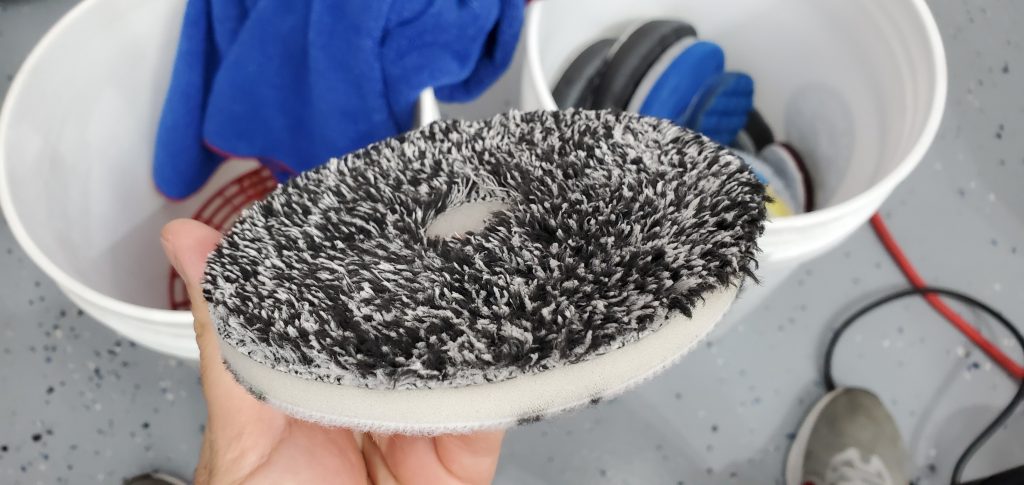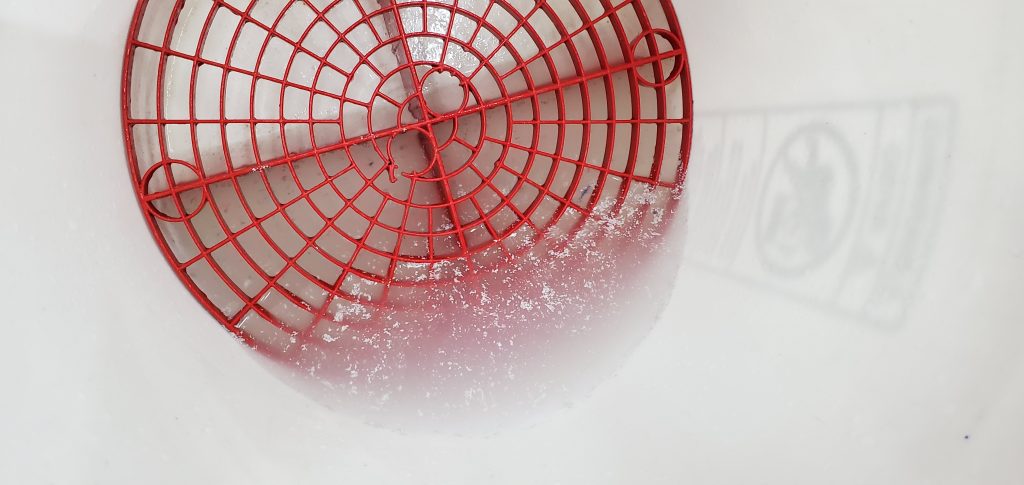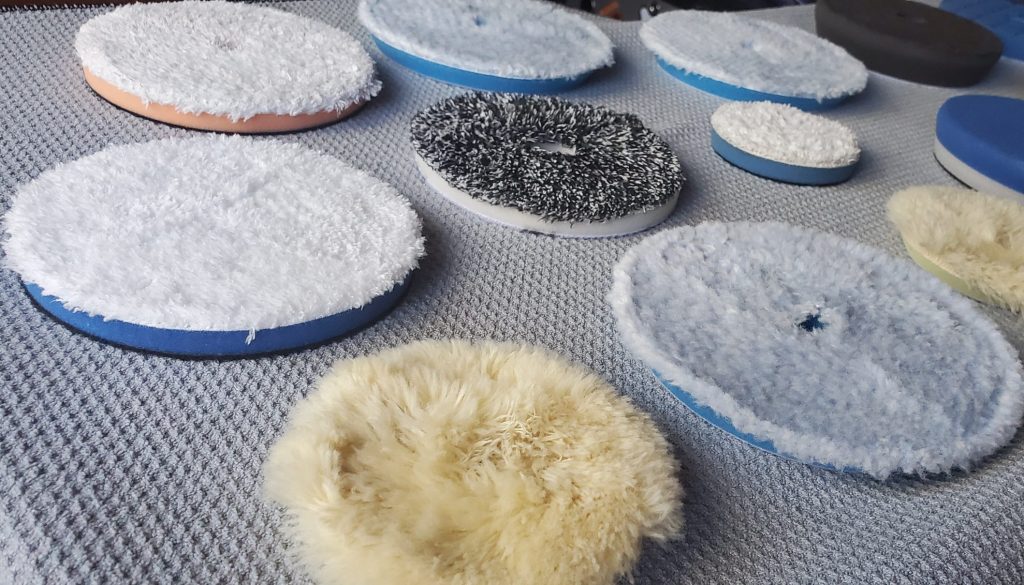Secrets Revealed: High Volume Pad Washboard
by Mike CardenasIf there’s one thing us detailers and enthusiasts enjoy the least, it is cleaning polishing pads. Especially for those shops that go through so many pads on a daily basis. Often times the chore of the lowest person on the proverbial totem pole, a drawing of the shortest straw or using other childlike approaches to avoid being the one to take on this task. Let’s face it, cleaning pads sucks! In my travels to different shops over the years, I’ve always been curious as to how the task of cleaning pads is done elsewhere. Even cleaning one pad is a hassle, but what happens when you have 20 or more pads to clean?
This article comes from an approach that I’ve seen in almost every shop from big to small over the years. Admittedly, done tongue in cheek as to avoid being considered a hack or irresponsible by other shops. As to who came up with this way of cleanings pads, that will forever be a detailing mystery. Controversial as it may be, this method works and it’s no wonder so many have used it to deal with this common dilemma. I wanted to share this method and show you how to make a simple but effective pad washing board to save you time and headaches in your shop or garage.
 The dreaded stack of used pads to clean. 1, 2, 3 not it!
The dreaded stack of used pads to clean. 1, 2, 3 not it!
The method is simply using high pressure to clean the pads. Of course, there is more to it than that, but let’s start with the washboard itself. You would be surprised at the shops I’ve seen use this approach. In some cases, the “washboard” used is a pallet covered in velcro or something similar to what I will be showing in this article. The one thing you certainly do not want to do is lay your pads on the concrete and go to town on them with high pressure.
Making a Washboard
For this project, I started with a piece of wood that is 1 foot wide by 3 feet long and about 1/2 inch thick. I’ve seen several made of acrylic or plastic because of their great resistance to water, but in these crazy times those materials are hard to come by so I will be making one out of wood.

1/2in x 1ft x 3ft board
You can certainly make your washboard to any size you prefer. For my amount of volume, I felt this size would be ideal and make it easy to store.
For the next step, I recommend painting or coating the wood with water-resistant paint, sealer or both. Remember that you will be spraying this with water and if you want it to last more than a few weeks, it’s worth taking the time of treating the wood first.

Treating for water resistance

Applying a sealer

All stained and sealed
Once you have treated the wood and it has dried, it’s time to cover it in velcro. For this, I’m using velcro with an adhesive backing. Make sure that for the front of the board you are applying the hooked side of the velcro so that the pads will stick to it.

Attaching the Velcro
For this step, you can either cover the board completely with velcro or space it as I did here. Plenty of room to get creative with this project so get fancy if you want to!
Now that you’ve completed the wash side of the board, it’s time to do the back of it. Using the loop side of the velcro, attach velcro to the edges to keep the board stable and keep it from sliding.

Loop velcro keeps the board from sliding or shifting during use
Once you have applied velcro to the back part, your washboard is now complete!

The finished wash board
Using the Washboard
Making a washboard is simple enough and now on to using it properly. I recommend keeping your pads soaked in a bucket with pad cleaning solution such as Lake Country Snappy Clean Boost Pad Cleaner prior to washing them on the washboard. This degreaser helps release the product and aid in the cleaning process. An important step is washing pads with a pad washing tool or by hand as well. I usually keep my bucket of pad cleaner solution at the ready as I polish and place the pads to soak after I have used them. Remember to spur your pads before placing them in solution to remove as much excess product on the pad as possible.
Once the pads have soaked, you can then arrange them onto your washboard for cleaning.

Dirty pads arranged on the board for washing
Leave some space between pads and then use high pressure using a 40-degree nozzle for best results. This nozzle usually comes color coded white on most high-pressure systems.

Wash pad cleaning
This part of the cleaning process is the controversial part, as many will state that this type of cleaning can destroy pads and/or force contaminants deep into the pads. Prior to writing this article, I reached out to various detailers that use this method and none have experienced any such issue. I myself did not find to have issues other than when compared to other conventional methods, this approach gave me a much faster cleaning process and a cleaner pad.
You can certainly spray the pads with a pad cleaning solution prior to spraying with the high pressure for extremely dirty pads.
When using high pressure to wash your pads, you will quickly find that the pads clean easier and faster. Give each pad a proper spray from various angles until you see the pad looking clean. For pads that are used for sealants or waxes, a longer spray rinse may be necessary. As you can see from the following pictures, the before and after is pretty noticeable.

Before high-pressure washing

After high-pressure washing
This part of the washing process is what really saves time about this method. It also gives you in my opinion a much cleaner pad at a fraction of the time. To wash the above number of pads, it took approximately 5 minutes for this part of the process.
Important Step
This is the part of this process that often goes overlooked! I’ve seen many shops simply let the pads drip dry on a washboard or take them off after washing and set them out to air dry. Once the pads dry, they store them away and the next time they use the pads BOOM dust goes flying everywhere! Much like using a pad washer, it’s highly important to spin the pads to remove excess water and contaminants that may still remain in the pad. I once did a training session at a well-known shop and only to have covered everyone watching in a cloud of dust from a pad that was washed. Embarrassing to say the least for that shop and funny to those who wondered why all the dust from a seamlessly clean foam pad.
This step is highly important whether you are using this method or any other pad washing method. So let’s go over this important step of the pad washing process.

Recently high pressure washed pads and a spin bucket
Taking your high pressure washed pads, use a clean bucket with a Grit-Guard insert. Using a machine polisher, attach a pad with the backing plate facing down to avoid water getting onto the polisher.

Spin drying pads
Next, place the polisher into the bucket and cover it with a towel to keep everything contained in the bucket while spinning the pad. Run your speed on the polisher at about 3 and spin for approximately 10 to 15 seconds. You will actually hear and feel the polisher once the pad has expelled the excess water.

Finished pad
You now have a clean polishing pad! From the above picture, you can see that the foam looks new and the fibers are clean and intact. You will find that once you spin the pads, they feel practically almost dry. This step eliminates the excess contaminated water in the pads to go back into the foam or pad. If you were not spinning your pads after washing before, you will see how much water was being left in the pads to air dry and why a dust cloud was occurring after washing your pads without spinning. As you can see from the picture below, the contaminants and product coming out of the pads are significant. The reason for the grit-guard is to keep those contaminants from going back onto the pad as much as possible.

The “dust cloud” culprit
Spin all of your washed pads until finished and if necessary, empty out the contaminated water if it begins to get up past the grit-guard level.
Once all of the pads have gone through the spinning process, you can then lay your pads to air dry away from dirt & debris.

Keep from dirt and debris while drying
With this process, you should have a dry pad if allowed to dry overnight. This also depends on how long the pad was spun so it’s important to spin them to remove as much water as possible. Unfortunately, the spinning process is important and unavoidable to make this method work properly, and takes a bit of time to go through all of the pads. Keep in mind that it is important to spin them after washing and do not leave them for another day to spin them! Leaving the pads to sit for another day will cause the contaminants to dry within the pads and making it harder to clean properly.
This cleaning method has a lot of advantages when done correctly. The confidence of picking up a pad and not having dust fly all over the place on initial use is high. Making it appealing to those who have had this scenario play out in the past. In closing, each method for cleaning pads in my opinion is not without controversy. From messy processes that ruin expensive polishers and barely get pads cleaned, to creating dust cloud pad bombs and tedious washing approaches that take forever. In a shop, time is money and having a clean stock of pads to work with is essential to any detailing process. Making it possible to work smarter, not harder is always welcomed and it’s no wonder a lot of shops are cleaning their pads this way.
I began working and researching this method over the course of 12 months, and when compared to other methods, it does give me a significantly cleaner pad and my pads have maintained their integrity far better than other methods. So if cleaning polishing pads is a long and trying chore in your shop or garage, you might want to consider making a washboard and trying this method.









I like this idea. I’ve used my Worx Hydroshot to rinse pads, but they can go flying. The board will help avoid that.
Also, I’ll mention my favorite coating to protect wood against water. I use Duplicolor’s truck bed coating in clear. It is working well on the interior of my work trailer.
Truck liner, great idea! That would hold up extremely well on a wash board.
Never seen this even mentioned before. Great advice!
Thank you
This is truly an epic game changer Mike, thanks for the awesome write-up. Cant wait to try this out.
Does the adhesive backed velcro stays glued to the board after multiple uses? I would imagine the combination of getting wet and the upward force of removing the pad would cause the adhesive to eventually fail. What do you think about using staples or small stainless steel screws every few inches to help affix the velcro to the board?
I guess if the ahesive on the velcro strips did fail with the water and a high pressure jet, the strips may then tear around the staples or screws and then gradually disintegrate, but hey!, velcro doesn’t cost the earth but a collection of pads as shown in Mike’s video could represent quite an investment (especially at UK prices!). Simply put aside half an hour or so and replace the velcro, possibly with the use of a high strength adhesive. Great video Mike, keep them coming!
I’m giving it a try. Hate cleaning pads by hand.